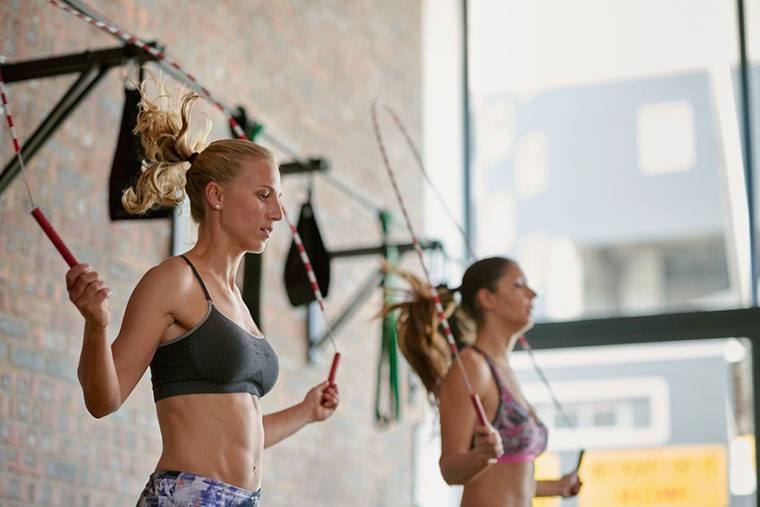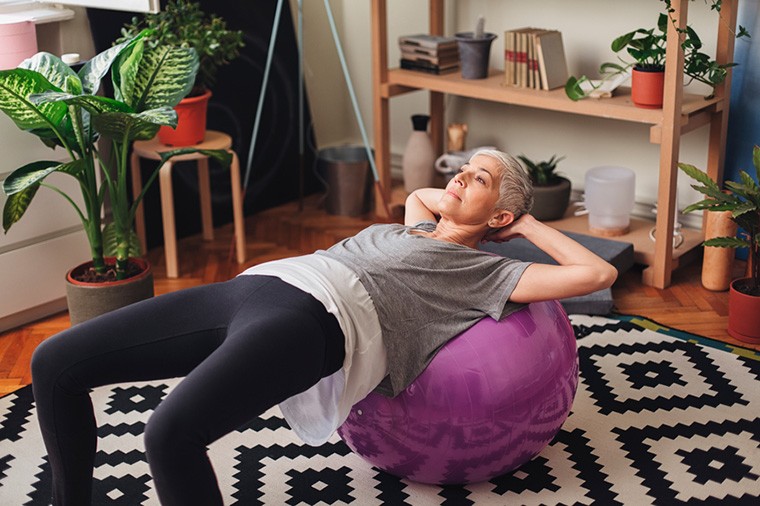Real Talk: Peeing a Little Mid-Workout Is *Very* Common
Given how mum most people are on the subject, I actually thought I'd have a hard time getting women to open up about accidentally peeing while exercising. But Katia Pryce, founder of DanceBody, busted that myth pretty quick.
"I have some women who always wear patterned pants so if they pee, you can’t see it."
“You’d be surprised how many times a day I talk about this,” she says. “My workout is dance cardio; there’s a lot of jumping. I have some women who always wear patterned pants so if they pee, you can’t see it.”
Her clients aren't alone in this concern. In fact, a market for leak-prevention products has, er, sprung up as of late. Poise recently introduced a new tampon-esque device called Poise Impressa that tackles bladder drama, while Thinx launched a new line of “pee-proof underwear” called Icon last fall. (Apparently hipsters pee their pants, too.) Even Gwyneth Paltrow's indirectly tackled the issue—after all, Goop carries Elvie, the $199 pelvic floor exercise tracker.
After many years of dancing around the subject, it seems like women are finally ready to address the once-taboo—but incredibly common—issue of exercise-induced incontinence.

{{post.sponsorText}}
So, what's causing women to pee when they work out in the first place—and how do you deal if it happens to you?

A little leakage is totally normal
First of all, you may hear the issue referred to as light bladder leakage (LBL). The scientific term is "stress incontinence," which refers to pee escaping for any reason—a laugh, sneeze, physical exertion (like working out), or even no obvious trigger at all. It's the most common involuntary bladder condition.
“One in three women will experience it at some point in their lives,” says Dr. Jessica Shepherd, an OB/GYN who partnered with Poise to educate consumers on the topic. “It’s definitely more common once you've had children, but there’s a misconception that if you haven’t had kids you don’t have bladder leakage. I’ve gotten to asking women in my practice if they’re experiencing it.”
“One in three women will experience it at some point in their lives."
Women who engage in high-impact, high-intensity workouts (cough, CrossFit, cough) are more likely to experience stress incontinence, she says, and women who are athletes for a long period of time may see an increase in incidence—up to 43 percent of dancers and athletes have involuntarily peed during workouts, according to research. The unsurprising common denominator? The activity most likely to provoke leakage was jumping.

How to fix your fitness leakage
So what can women do, other than swear off jumping jacks? Products like Icon's underwear certainly provide immediate help—so can skipping coffee before cardio, as caffeine has been found to contribute to the problem.
But the key to minimizing future leakage lies in strengthening hard-to-reach muscles that support your urinary system. Dr. Shepherd refers patients to pelvic physical therapists, who “actually identify and isolate the muscles that may be contributing to the incontinence and recommend specific exercises.”
They're likely to prescribe kegels, but solving the problem requires more than clenching.
Yes, they're likely to prescribe kegels, but solving the problem requires more than clenching, explains Maya Jocelyn, founder of Brooklyn's Studio Maya. Activating your deep-core abdominals is essential to the trainer's fitness method. “We work on the pelvic floor like any other muscle, to increase our ability to more powerfully engage it,” she says.
The exercises, she says, can help head off stress incontinence involve strengthening the transverse abs (as opposed to the rectus abdominus, AKA six-pack muscles) in conjunction with the pelvic-floor muscles and diaphragmatic breathing. One small new study published in the American Journal of Physical Medicine & Rehabilitation points to the moves doing the trick. Women with overactive bladder symptoms who did pelvic-floor-muscle exercises were found to reduce their symptoms by up to 69 percent.
Seeking out a private session with a trainer who specializes in deep-core work—or at least going consistently to a class that focuses on these muscle groups—will be key. The good news? “People notice significant changes within weeks, definitely,” Jocelyn says. Which means you'll have your look-at-me leggings back in rotation in no time.
Originally published April 21, 2017. Updated October 22, 2018 with additional reporting by Tehrene Firman.
To get you started, here's the right way to do kegel exercises and a personal-training app to help you strengthen your pelvic floor.
Loading More Posts...